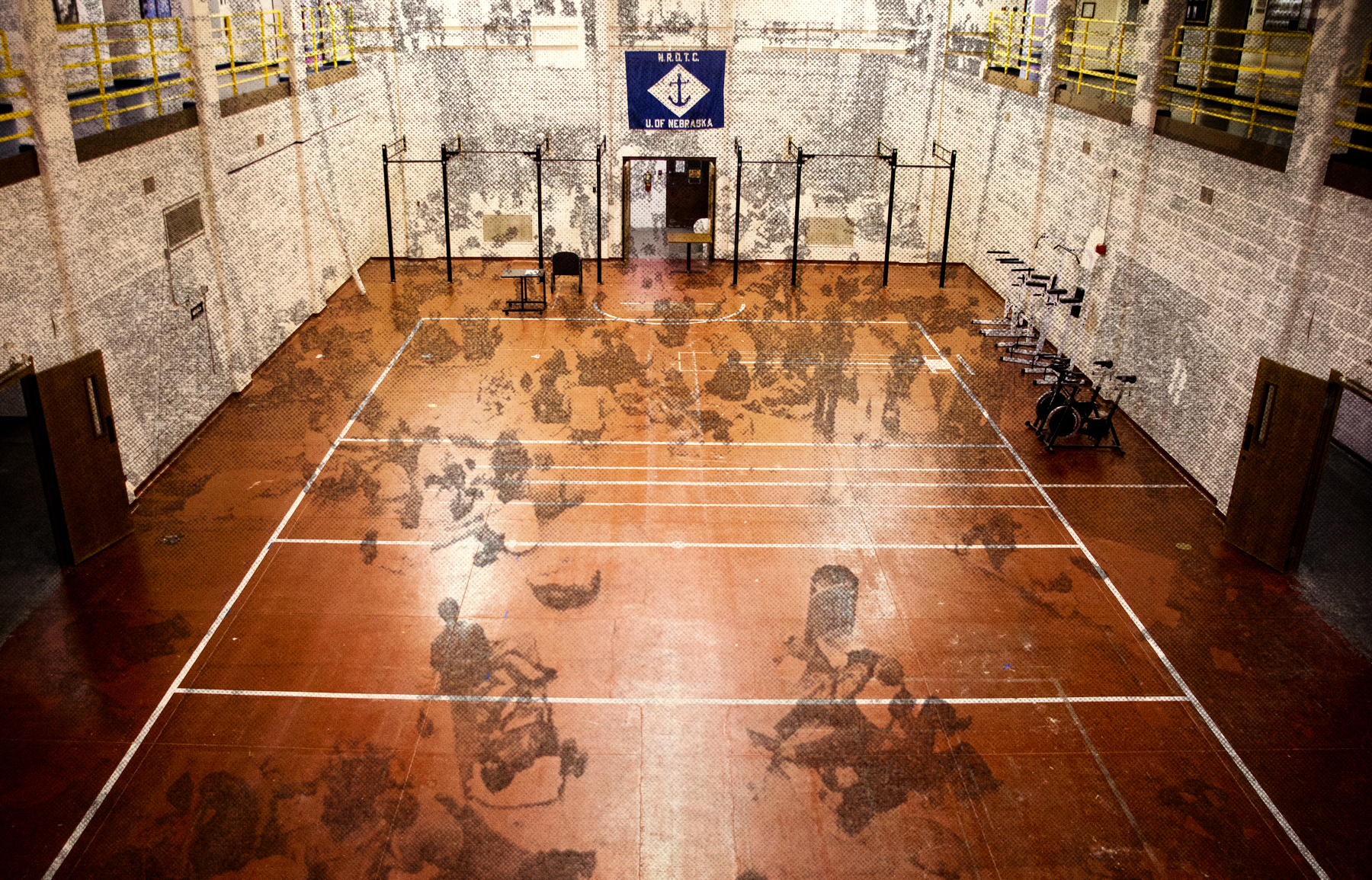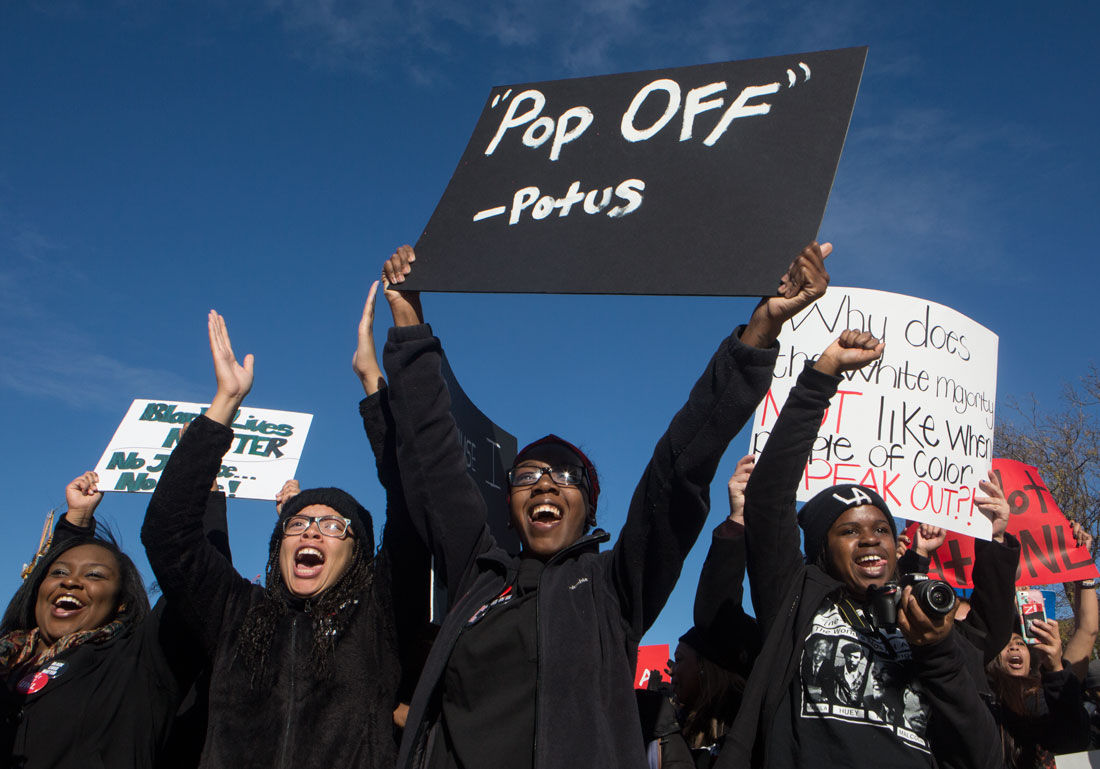

Similarities present in activism at UNL during Vietnam War, today
On May 4, 1970, 47 years ago, the Ohio National Guard shot 13 Kent State University students, killing four. Two of the deceased were protestors arguing against the expansion of the Vietnam War into Cambodia. The other two were students walking to their next class.
On May 4 the Vietnam War became real for America. On May 4 the Vietnam War became real for students at the University of Nebraska-Lincoln.
After hearing news of the shootings, newspapers reported an anti-war rally had gathered outside the Nebraska Union. A student named Philip Medcalf announced that he would be going to the Lancaster County draft offices at the Terminal Building and invited the audience to join him.
A crowd of 50 students followed Medcalf, resulting in a demonstration the Lincoln Police Department declared unlawful. He and 12 students were arrested on-site.
Back on campus, a group of students met to plan what would become the largest student demonstration the university had seen up to that point. The group included Danny Ladely, the current director of the Mary Riepma Ross Media Arts Center at UNL.
“We’d had some pretty good protests, but I think people were really frustrated nothing was really coming of the protests,” said Ladely, who graduated in 1973. “Kent State really spurred them into stepping up a bit. Some of us decided to get together and escalate things.”
After pushing past three or four policemen outside the Pershing Military and Naval Science Building, a group of 200 students instigated an all-night sit-in that would swell to more than 1,000 participants.
During the night, Ladely and his peers drafted a list of demands they presented to the university administration. According to a May 6, 1970 issue of The Daily Nebraskan, the demands included amnesty for the students arrested at the Terminal Building and the suspension of all ROTC classes until the end of the war.
An ASUN representative acted as an emissary between the students and the university administration, including delivering the demands.
“[The demands] were pretty pie in the sky,” Ladely said. “One of the things we were asking for was for the university to [let students] go on strike in protest of the war.”
The university granted UNL students their right to strike the next morning, after several meetings throughout the night. Classes occurred as normal, but a resolution passed by faculty dictated students participating in the strike would not be punished for missing class. Instead of attending their regularly scheduled classes, students attended seminars that explored the causes of protests, right and left political ideologies and other issues.
Ladely said, unbeknownst to them, the Lincoln Police Department had been preparing off-campus to disperse the crowd.
Then-Chief of Police Joe Carroll had told newspapers nearly 150 Lincoln police officers, Lancaster County sheriff's deputies and state patrolmen were “prepared to remove students ‘occupying’ the Military and Naval Science Building.”
“We will enforce the law with whatever means are necessary,” Carroll said in a 1969 issue of The Daily Nebraskan.
“Before they got a chance to do that, they [ASUN and faculty members] called a campus-wide town hall-type meeting in the student union,” Ladely said. “So we left right before police were going to come and bust our heads on campus.”
The draft could have been a driving factor for young people to become politically active. In the early years of the war, college students could receive deferments to continue pursuing their degrees.
This all changed in 1969, when the lottery system was put into place. 336 blue capsules containing birth dates were selected at random and assigned a number to determine the order military-aged men were to be drafted. Men with higher numbers had the benefit of hopefully waiting out the war. Those with lower numbers had to decide if they were ready to go to war or leave everything behind and cross the border to Canada.
“Whether you were in college or not, you were in the lottery,” Ladely said. “My number was 13.”
Ladely had been granted conscientious objector status prior to the lottery and wasn’t drafted because of it. This special status was given to individuals who opposed serving in the military for personal, religious or moral reasons.
However, many students were drafted while pursuing their degrees. Ladely said one of his former roommates Buel Andersen had been drafted and taken out of college to fight overseas. He was never able to finish his degree, and his name can be found on the black granite of the Vietnam Veterans Memorial.
Ladely said students watching their classmates being drafted caused anxiety and doubt, but even during the tense political and social environment the Vietnam War created, UNL officials were supportive to politically-active students, a policy that continues today.
- Then-junior Mecca Slaughter at 2015 Black Lives Matter rally on UNL's campus
One example many students may think of is the Black Lives Matter rally in 2015, where hundreds of students and faculty of all ethnicities met on the Selleck quadrangle. The demonstration followed the explosion of activism on the University of Missouri-Columbia when groups of concerned students pushed back after the university’s hamfisted responses to several racially-charged incidents occurring on its campus.
According to archived issues of The Daily Nebraskan, the anti-racism activism spilled into the Twitterverse with #NotAtUNL, which encouraged students to share their experiences with racism, sexism, etc. on UNL’s campus.
of students said they’d participated in a protest, demonstration and/or rally on campus this academic year.
“You may not feel our pain, but you will hear our protests,” then-junior Mecca Slaughter said at the rally. “We want you to hear us.”
Various media outlets have said the voices of today’s young adult activism carry echoes of Vietnam-era activism. However, the two political, economical and social climates could not be more different in comparison.
Students today face a much heavier economic burden than previous generations. Tim Borstelmann, a professor of modern history at UNL, said college students in the late 1960s saw a different, better economy than today.

Borstelmann said the United States was at the apex of a post-World War II era of economic growth. The country held a dominant global position, so Americans had a very secure middle class by the time then-president Lyndon B. Johnson dispatched Marine forces to Vietnam.
UNL didn’t start charging tuition per credit hour until 1976, one year after the Vietnam War concluded. During the war, however, in-state students saw tuition costs double from $334 per year to $663.
“Students on campuses are more anxious than they were 45 years ago,” Borstelmann said. “[They] are much more concerned about getting a job and about paying off student debt, neither of which was anywhere near the same level of concern in the 1960s.”
According to UNL’s Office of Institutional Research, Analytics and Decision Support, in-state students paid $8,537 in tuition during the 2016-2017 school year with $225 per credit hour, while out-of-state students paid $23,057 per year with $709.25 per credit hour.
Aida Goitom, a junior English and philosophy major, said the economic anxieties can put a damper on campus activism. She said she’s previously participated in several demonstrations during her time at UNL but now finds herself in a position where she isn’t as active as she wishes, something she sees in her fellow classmates.
“When it comes to activism, it's healthy for that to be on our minds at least once a week. Why not?” Goitom said. “I want everyone to be doing everything they can, but people have lives to lead."
Goitom was a supporter of Vermont senator Bernie Sanders during the 2016 presidential election. She said the initial shock of the election outcome got her involved during the earliest months of the Trump administration.
Unlike Goitom and the 2016 election scene, many people during the Vietnam War had more confidence in the political establishment.
“Americans at that point, widely speaking based on public polling, widely believed that their federal government were more or less honest,” Borstelmann said. “They knew that they were politicians and that they'd shape the truth if they had to, but they basically believed they had the interest of the nation at heart.”
When the Kent State shootings changed the attitudes of young adults across the nation, UNL administrators were more than willing to allow students to vent their frustrations in a civil public forum.
J.L. Schmidt, a UNL student who left the university in 1969, said the chancellor supported what were called the Hyde Park Forums.
Taking its name from the legendary free speech center in South Side Chicago, the events were held in the Crib of the Nebraska Union. According to UNL library archives, the forums allowed students to speak to their peers about current events that troubled them or ideas that interested them.
The event also allowed anyone in attendance to discuss whatever they felt for four minutes. Attendance numbers would range from the tens all the way to the hundreds.
Schmidt said as the weekly event grew in popularity, it was moved into the Colonial Room. It grew so large that the university brought in countercultural poet and icon Allen Ginsberg to speak.
“It was a time of awakening,” Schmidt said. “We realized the government is a well-oiled machine.”
Goitom said, regardless of what any pundit or personality might say, college is a time for students to engage in politics and further their understanding of the world they live in.
“You come, and you spend your days with these people. You make connections. You grow as a person. You learn how to carry yourself; you learn what you believe in. You learn why you believe in those things, and you learn, if you had a different experience, would you still believe in these things?” Goitom said. “I think college is not just about coming here and going to school; it's a life experience.”